Tracking The Process Of Abandonment: Victoria Lucas’ Decaying Urban Spaces
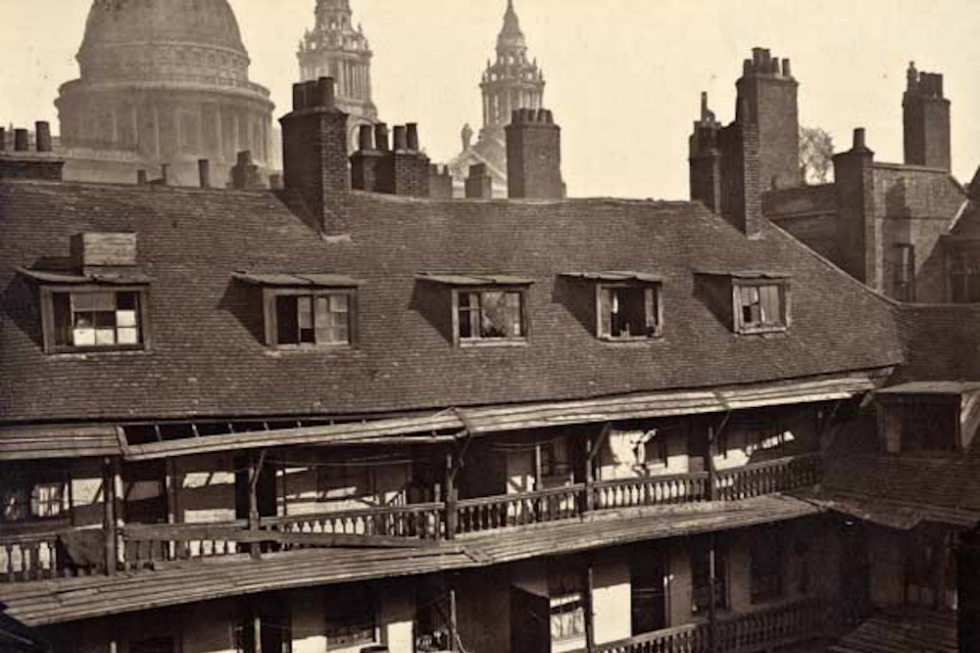 Oxford Arms, London (1875) Demolished around 1876 (above)
Oxford Arms, London (1875) Demolished around 1876 (above)
Artist Victoria Lucas charts the abandonment of obsolete buildings through film and photography, finds Emma Fraser; and in doing so, salvages material relics of the modern world…
In his 1874 epic poem, The City of Dreadful Night, James Thomson wrote of the ruins of the city of London:
“The city is not ruinous, although
Great ruins of an unremembered past,
With others of a few short years ago
More sad, are found within its precincts vast.”
For Thomson and others in this period, the ruins of a recent past were often more poignant than the historical relics for which London was increasingly known in the Victorian era. The city was in transition, beset by both decay and development – a place of slums, demolitions, and grand imperial architecture – and modern, not ancient, ruins were very much a part of this change.
Following the Second World War, the city was again cast as a site of modern ruination – in fact, the whole European experience of the early 20th century could be seen in terms of disintegration:
“A generation that had gone to school on a horse-drawn streetcar now stood under the open sky in a countryside in which nothing remained unchanged but the clouds, and beneath these clouds, in a field of force of destructive torrents and explosions, was the tiny, fragile human body” (Walter Benjamin (1936)).
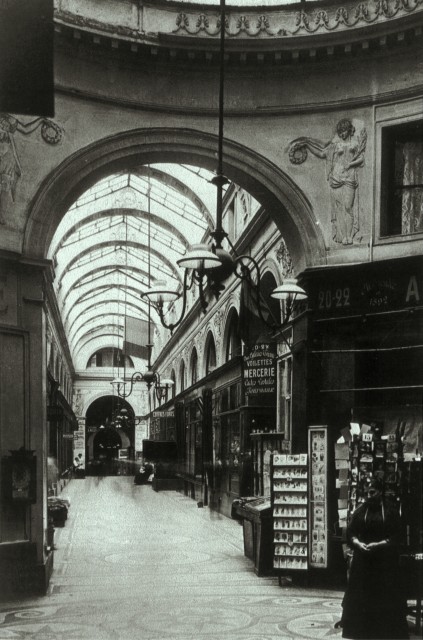 Galerie Vivienne, Paris (1905)
Galerie Vivienne, Paris (1905)
Walter Benjamin –influenced by Baudelaire, and the Surrealist writer Louis Aragon – saw the ruins of the recent past as sites in which the destructive nature of eternal progress could be detected, and potentially opposed. Living in exile from Germany during the 1930s, Benjamin spent his time wandering the old shopping arcades of Paris: 19th century precursors to the shopping mall, once frequented by wealthy Parisians, they were, by then, falling into disrepair. It was in these arcades that Benjamin found signs of the power of obsolescence – objects and spaces falling out of fashion, rendered strange and out-dated to a contemporary eye.
In a more modern context, it is this process of obsolescence – among other factors – which produces vast swathes of ruin in American rust belt cities, whose days of manufacturing have long passed, and whose factories and family homes stand open and decaying.
Today, the urban obsolete most often takes the form of abandoned strip malls, empty skyscrapers, industrial ruins, and derelict hospitals frequented by urban explorers. In the 1930s, Benjamin was essentially undertaking an early form of urban exploration in buildings that were abandoned, on the brink of ruin. The recent interest in urban decay is simply one more manifestation of the persistent sense that the city is not only as a place of growth and life, but also as a place of modern ruin. However, Benjamin’s conscious practice of cataloguing relics and remnants is a more complex model for inhabiting and working with places on the edge of society – locations in the process of unbecoming, disappearing from the world forever.
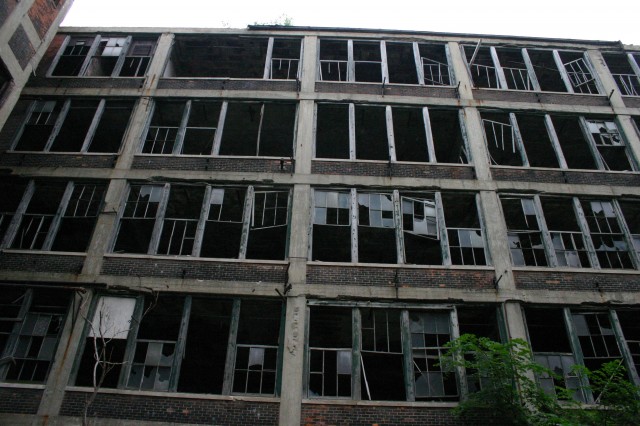 Factory, Detroit (2009)
Factory, Detroit (2009)
Such work is foregrounded in the earliest responses to the modern city – the poems of Thomson, Baudelaire and others who produced art or literature that reflected the real and abstract decay that has permeated cities particularly since the industrial revolution. The speed of change in the urban world matches the speed of decline, demolition, redevelopment – obsolescence – of the built environment. In a contemporary context, this now means that buildings become obsolete in a generation, often less.
As the product of a wider force of change, the urban obsolete holds the potential to provide artists, poets, academics, and others with valuable materials. Louis Aragon found the declining arcades to be places which embodied transience itself. As Louis Aragon put it:“It is only today, when the pickaxe menaces them, that they have at last become the true sanctuaries of a cult of the ephemeral, the ghostly landscape of damnable pleasures and professions. Places that yesterday were incomprehensible, and that tomorrow will never know” (Le Paysan de Paris (1926)).
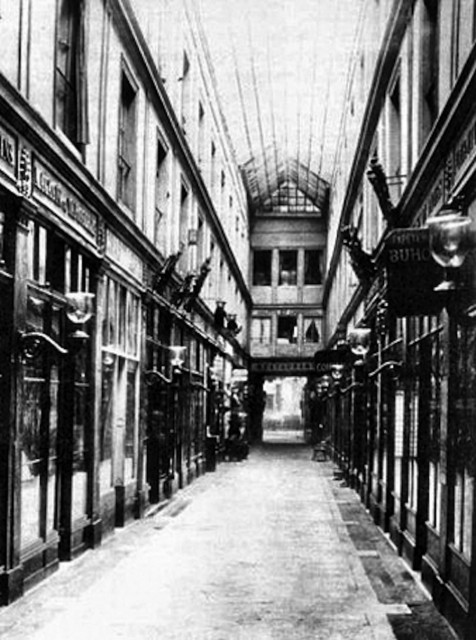 Passage de l’Opéra (1909)
Passage de l’Opéra (1909)
Castle Market in Sheffield is one such example of “[p]laces that yesterday were incomprehensible, and that tomorrow will never know”. This market was condemned to obsolescence very early in its life – although the most contemporary section of the site, designed by J. L. Womersley and Andrew Darbyshire, was finished in 1965, the building was flagged for major reconstruction by the 1980s. As demolition loomed, the market characterised a particular period of development and way of living, common to English cities of the post-war period, with its multilevel walkways, open stalls, and original signage and tenants – no less iconic (if less attractive to some) than the Parisian arcades.
In November 2013, Castle Market was finally closed and boarded up, after decades of neglect and uncertainty. In late 2014, the market sat empty, increasingly derelict amongst the crowds of people moving between bus stops, Park Hill, and the more central shopping districts of the city. By February 2015, the market had been reduced to chunks of warped steel, piles of teal blue fittings, and matchstick-like slivers of wooden trimmings scattered next to a growing void where the market once stood.
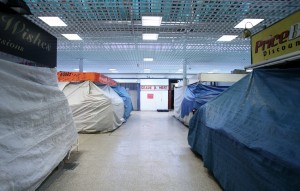
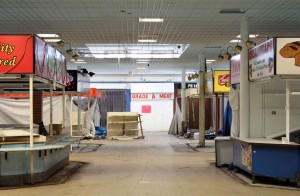 Before and After, Castle Market, Victoria Lucas (2013)
Before and After, Castle Market, Victoria Lucas (2013)
In the period leading up to the closure of the market, artist Victoria Lucas undertook a residency, spending Mondays and weekends for over a month exploring the markets, taking photographs, talking to people, hosting a photography workshop, talk, and closing event for the market. Lucas also produced a film during the final two weeks of the residency, tracking the process of the closure.
This kind of art practice, which is physically and temporally located in the moment of final decline, is profoundly significant to the consideration of urban dereliction and ruin, particularly when most contributions to the discussion around modern ruins emphasise trite tropes of “haunting” and “chilling” decay, long after people have left.
Lucas’ work After Castle Market (2013) illustrates the process of unbecoming, in which the almost magic shift from function to “surplus-to-requirements” occurs – from one day to the next. Castle Market moved from a locally inhabited and active (if somewhat run-down) shopping centre to a desolate abandoned building, overnight.
Tracking the process of abandonment from active inhabitation, to emptiness and almost immediate dereliction, offers something more than touristic snapshots of someone else’s ruins. This inhabited and material experience, over time, is very different from a voyeuristic and distant gaze that fetishises shocking decay out of context. It is an approach that – whether through the use of film, stills, sound recordings, or other forms of archival and creative practice – can effectively evoke both a sense of place and the complexity of the processes of decay.
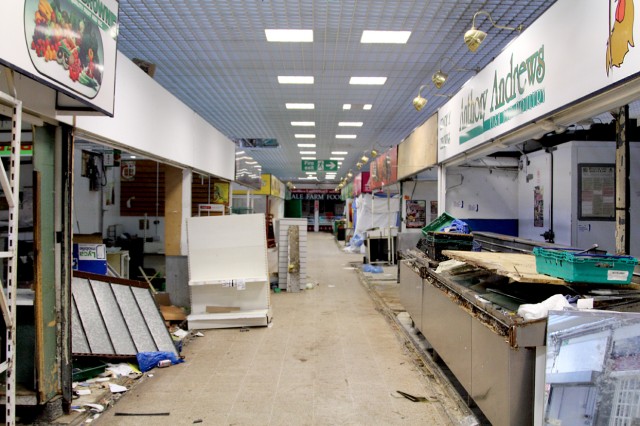 Castle Market (2013)
Castle Market (2013)
After Castle Market evokes a sense of place and abandonment that is at once transformative, and in which emptiness, though melancholic, also provides the possibility for a kind of salvage of the material relics of the modern world. The urban obsolete, as that part of the built environment which is surplus to need, can be put to use, even where it is – by its very definition – useless.
In cities with mixed development – particularly the ubiquitous pattern of decaying public housing accompanied by booming gentrification – the urban obsolete is often bound up in complex circuits of value construction. Post-industrial England, for example – once the sad symbol of Thatcherism – becomes valuable real-estate in booming city-centres, where repurposed eye-sores are big-money makers for regeneration architects and developers. Valued in terms of contemporary fashion, old mills and factories become trendy “loft” spaces; their worthlessness (as spaces of production which are no longer required), is reversed in the demand for spacious yet grungy urban spaces, as dense city living becomes more attractive, and industrial history less shameful.
Undesirable buildings, in this value-attributing framework, then meet their fate as the gaze of planners and developers fails to account for their possible significance beyond the dominant vision of “city living”. Castle Market is one such building – despite its use-value to local communities, it was replaced – geographically and in terms of purpose – by a more desirable market vision on the other side of town, the Moor Market.
After the closure, demolitions teams immediately began to tear out fixtures and interiors, taking concrete samples to test for explosive loads, likely rendering the building structurally unsound, and practically useless, immediately. Once stripped of function, Castle Market was materially unsalvageable. No decision, no shift in a value framework in favour of modernist concrete shopping markets, could save this place. An entire building, thrown onto the trash heap.
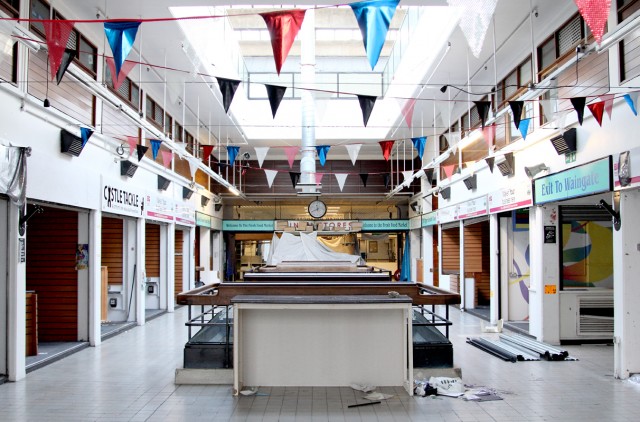 Castle Market (2013)
Castle Market (2013)
But what of a material practice – like Lucas’s – situated in the moment of demise? A practice of salvage that understands such sites in their moment of disappearance, as Benjamin and Aragon understood the threatened arcades on the brink of oblivion?
Such a practice, consciously curating remnants with attention to the process of their unravelling, is evident in the way in which After Castle Market lingers on the architectural details, the fading signage, the old-fashioned furniture of Castle Market, immediately following its closure.
The act of valuing the obsolete on the brink of disappearance salvages something – not the building itself, but some sense of the experience, as an encounter with remnants of a former life. To do so in-situ, where decay takes hold as the transformation from functional to purposeless takes place, renders the usually unknowable details of abandonment – and therefore, the illogical operation of value attribution – quite transparent.
To take this one step further, to see the city in ruin – as it has appeared to many artists, writers, and intellectuals since the emergence of its modern form – is not to condemn, but rather to rescue from the oblivion guaranteed by the pace of change and redevelopment since the industrial revolution. That such change is inevitable seems obvious – but to let once valued and occupied places disappear, unconsidered, is to miss an opportunity to rescue the condemned – if only as a fragment of the rich life such sites once led.
This essay was written by Emma Fraser in response to her conversations with artist Victoria Lucas, which began at a Practising Place event in Sheffield in 2015 and can be viewed online here.
This text forms part of a series of essays, commissioned jointly by In Certain Places and The Double Negative, which has been developed through Practising Place – an ongoing programme of conversations, designed to examine the relationship between art practice and place. Each event is hosted at a different across the country and explores a specific aspect of place by bringing artists together with other researchers who share a common area of interest.
Practising Place is part of In Certain Places – a programme of artistic interventions and events based in the School of Art, Design and Fashion at the University of Central Lancashire.
Victoria Lucas is a Sheffield-based artist whose practice can be described as a series of considered and poetic interactions with objects and places. Focusing on urban public spaces that frame the everyday, her artworks punctuate the ordinary so that relatively minor happenings are revealed as monumental events. Lucas has exhibited widely across the UK and internationally, including a solo show at Grizzly Grizzly in Philadelphia, and group shows at Casa Maauad in Mexico City and Bolsky Gallery in Los Angeles. She co-ordinates Hanover Project, a contemporary art gallery in Preston, where she also lectures in Fine Art at the University of Central Lancashire.
Emma Fraser is a cultural geographer, sociologist and PhD candidate at Manchester University whose research interests focus on decay and decline in urban spaces. Her PhD project “Self and Ruin: Imagining the end of the city” considers urban ruins (both real and imagined), in relation to the way we imagine the end of cities and consume versions of the past, with a particular emphasis on video games and digital and 3D representation. Fraser, who has undertaken research in Berlin, Paris, Sydney, Detroit and Chernobyl, has also written about the work of Walter Benjamin in connection to urban renewal, dereliction and memory.
After is a 20 minute film by Victoria Lucas, which captured Sheffield’s Castle Market before its doors were closed to the public. The film studies the condemned brutalist building as if the lens were dutifully studying a photograph. The empty modernist shell that was once Sheffield’s vibrant market hall is the subject of failed utopia. The film was created as part of a six week residency at the site, during which Lucas occupied an empty unit in the lower level of the market. A publication documenting the project and the closure of the building can be found here.
See The Expanded City Symposium – a day of presentations, conversations and site visits within the City Deal areas of Preston. Thursday 16 June 2016, 10am-4pm (bus pick up from Preston railway station at 9am) at Woodplumpton and District Club, Preston – £10 (a number of free tickets are also available)





